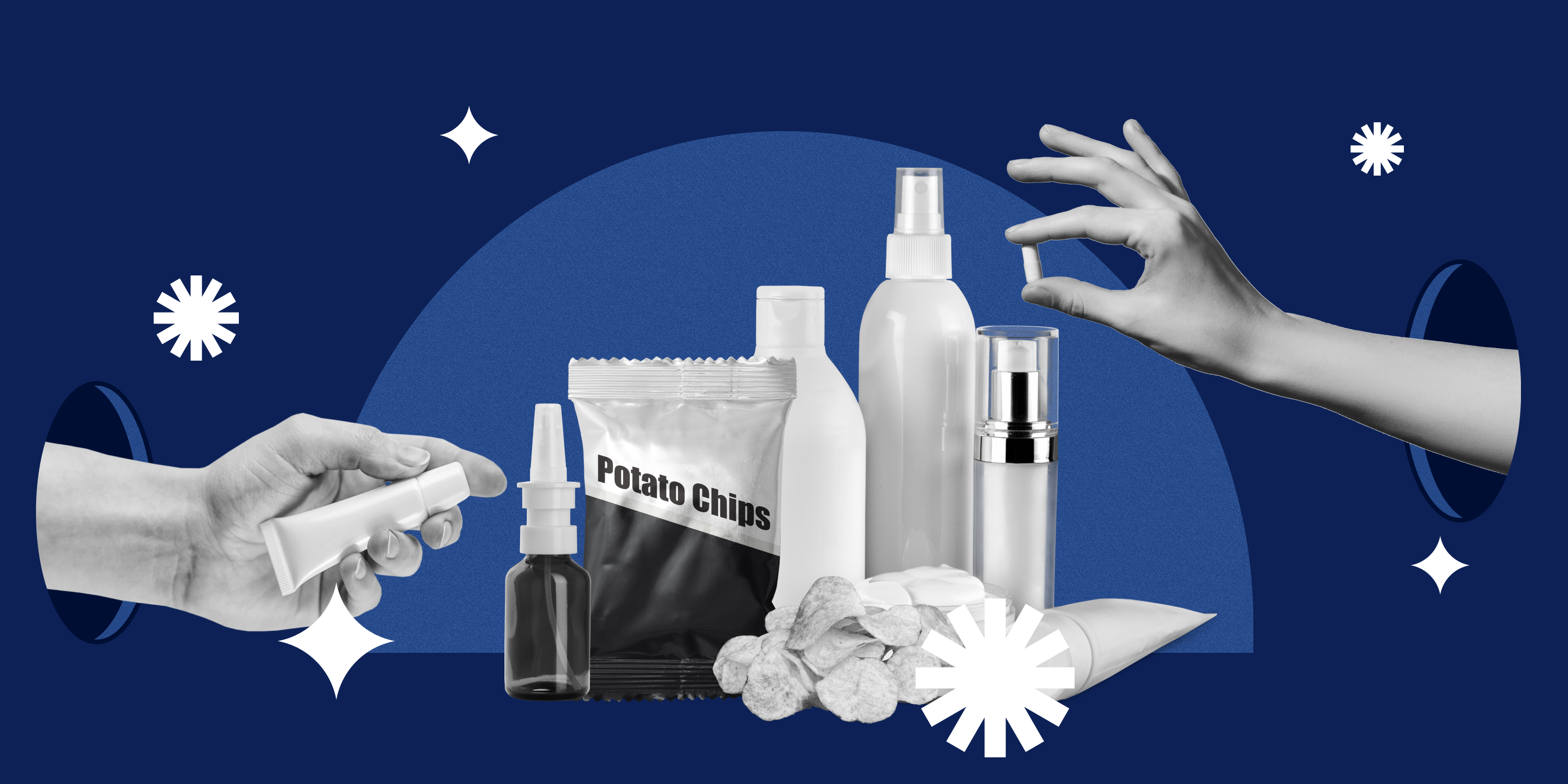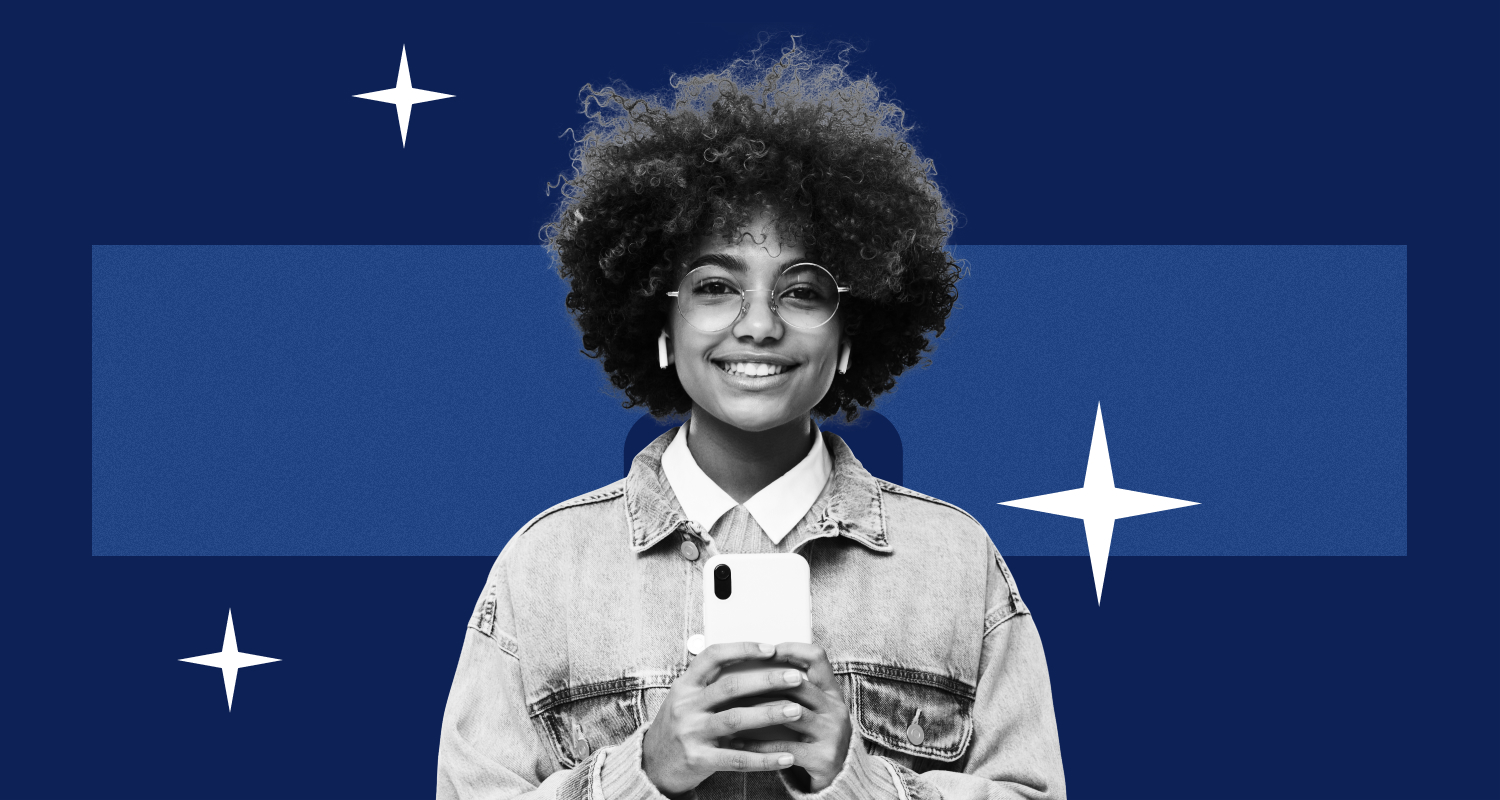
THE 2023 CPG CUSTOMER JOURNEY
Cross-Category
CONTENTS
Beauty Shoppers Especially Look to Social for Inspiration
Social media is a key part of product discovery across CPG categories, but ranks particularly highly when it comes to beauty purchases, outranking even television in terms of where consumers recall hearing about beauty products they later went on to purchase in the last year. By comparison, social media ranked second behind television for both food and beverage and OTC health products in this regard.
When it comes to which social platforms users most often discover new products, beauty also stood out from food and beverage and OTC health products for the share of respondents who chose TikTok. Facebook won out as the top platform across all three surveys, but in the beauty category TikTok was the closest of any other social media platform across any of the three product categories studied to matching Facebook.

GENERATIONAL INSIGHTS
While TikTok was the leading social media platform for product discovery among Gen Z for food and health products as well, it was a particularly strong driver for beauty products. Among Gen Z beauty shoppers, 48% picked TikTok as the social media platform where they were most likely to discover beauty products. For food and beverage, just 29% of Gen Z picked TikTok, while 27% of Gen Z health product shoppers picked TikTok.
How to Win CPG Shoppers and Influence People
Influencers play a meaningful role in promoting products that social media users ultimately go on to buy, and at least 59% of respondents recalled purchasing a product promoted by an online influencer in the last year across all three product categories. Influencers had the biggest impact on beauty shoppers, though, with 70% saying they had bought a beauty product based on an influencer’s recommendation.

Following relevant product brands was also most prevalent in the beauty category, with 41% of respondents saying they did so compared to about a quarter of food and beverage and OTC health shoppers. Importantly, beauty was the only product category for which brand social media followers highlighted new product announcements as the most common reason for following brand accounts. Combined with the fact that beauty shoppers were the most likely of any of the three product categories to describe their approach to buying as liking to look for new products/brands to try, it’s clear beauty shoppers are more focused on new products than shoppers in other CPG categories.
GENERATIONAL INSIGHTS
Just as social media generally and TikTok specifically play an outsized role in product discovery for younger shoppers in the beauty space, online influencers played the greatest role in driving conversions among Gen Z beauty shoppers. Importantly though, influencer recommendations were significant purchase drivers across all three product categories in this report among Gen Z, with 78% having bought health products, 86% having bought food products, and 87% having bought beauty products based on an influencer’s recommendation.
Consumers Plan to Shy Away from Pandemic-Boosted Channels
Looking at how consumers expect to change their behavior when it comes to CPG products over the next year, it’s clear that pandemic-boosted purchase behaviors like online ordering and buy online pick up in store (BOPIS) are set for declines in popularity as the world continues to return to pre-pandemic norms. Food and beverage products are set to see the biggest decline in online ordering, and beauty products are likely to see the biggest reduction in BOPIS over the next year.
Delivery services are also likely to take a step back over the course of 2023, with at least 35% of respondents in each product category saying they’ll use these services less compared to less than 20% of respondents in any category saying they’ll use these services more. Food and beverage products saw the highest share of respondents say they recalled using a delivery service like Instacart or GoPuff for purchases in the last month at 12%.
The Impacts of Inflation Vary by Product Category
Product price inflation is naturally impacting CPG purchases differently depending on the necessity of the product category. Only 26% of respondents indicated they’ve purchased fewer OTC health products in the last year as a result of inflation, compared to 40% of beauty shoppers, with food and beverage products right in between at 33%.
While consumers were more likely to be making fewer purchases in the beauty category due to inflation, they were less likely to be buying cheaper beauty brands than for other product categories.
This tendency was heavily age-dependent, however, with Gen Z showing much greater willingness to substitute cheaper beauty alternatives than Gen X or baby boomers. Among Gen Z, 37% of beauty shoppers had purchased cheaper beauty products due to inflation, just under the 39% share who were buying fewer beauty products overall. For boomers, just 22% were buying cheaper beauty products, compared to 43% buying fewer beauty products overall.
Amazon vs Walmart: The Battle for CPG Customers
Amazon and Walmart are the top two online destinations for both initial product searches and purchases across all three CPG categories studied, but comparisons between the two are meaningfully different for each. Walmart dominates Amazon when it comes to the website/app respondents are most likely to turn to for food and beverage purchases, but Amazon has the upper hand with beauty shoppers. In the OTC health category, these two giants are neck and neck with one another.
When asked where they had purchased CPG products in the last month, however, consumers said shopping at big-box stores like Target or Walmart was more popular than ordering online from a large retailer like Amazon or Walmart in all three categories. Brick-and-mortar is obviously still a crucial part of the consumer journey when it comes to day-to-day staples like OTC health, food and beverage, and beauty products.

GENERATIONAL INSIGHTS
For online purchases, Gen Z exhibited similar affinities for Walmart and Amazon as other generations, preferring Walmart for food and beverages and Amazon for beauty, but Gen Z was more likely to turn to Target than other generations across all three categories in this report. Target's appeal was consistent for Gen Z across product categories with 13% making it their top pick for online beauty purchases, compared to 14% for food products and 12% for health products. Gen Z was also much more likely than other generations to use a category-specific retailer's website or app to complete an online beauty purchase. The same did not hold true for food or health products.
Consumers Love Written Reviews but the Popularity of Other PDP Components Varies
Looking at what consumers most value when it comes to on-site experience, the product detail page components that are most useful vary significantly by product category. While written reviews were most commonly chosen as the top feature across all three categories, second place was different for each category.Younger respondents were less likely to favor ad offers meant to appeal to the most people with only 29% of Gen Z and 33% of millennials choosing that option, compared to 39% for Gen X and 41% for baby boomers. Another 29% of Gen Z favored offers based on interests, while 26% favored offers personalized based on past actions they had taken.
In particular, the usefulness of photos is highly dependent on the product category, ranging from 23% finding it useful for OTC health products to 31% for food and beverage to 38% for beauty. Brands need to ensure they’re optimizing for the most important features within the product category that their product inhabits to provide the best customer experience online.
CPG Shoppers Don’t Mind Ads on Retail Sites
Across all three product categories studied, the vast majority of respondents had positive-to-neutral perceptions of the sponsored listings featured on sites like Amazon and Walmart. No more than 9% of respondents in any of the three surveys believed that sponsored listings make it more difficult to find what they’re looking for, compared to at least 23% believing that these listings are helpful for revealing products they might not otherwise know about.
Further, at least 23% of respondents in each survey said they don’t have strong opinions about these listings, and at least 16% of respondents in each survey said they’d never even noticed sponsored products. All in all, ads featured directly on retail websites aren’t frowned upon by the vast majority of CPG shoppers.
Most Shoppers Want to See Ads Relevant to Them or People Like Them
Across the three product categories studied, no more than 39% of respondents said that they prefer ads that feature offers designed to appeal to the most people. This share was the smallest for beauty products, with just 28% of respondents preferring mass-appeal ads, as differences in features like skin and hair make it important for shoppers to find products relevant to their needs.
Among other types of offers, the greatest share of respondents preferred offers based on past actions they themselves had taken, followed by offers that appeal to people who share their same general interests and then by offers that appeal to people with similar demographics. This order of preference was the same across all three product categories.